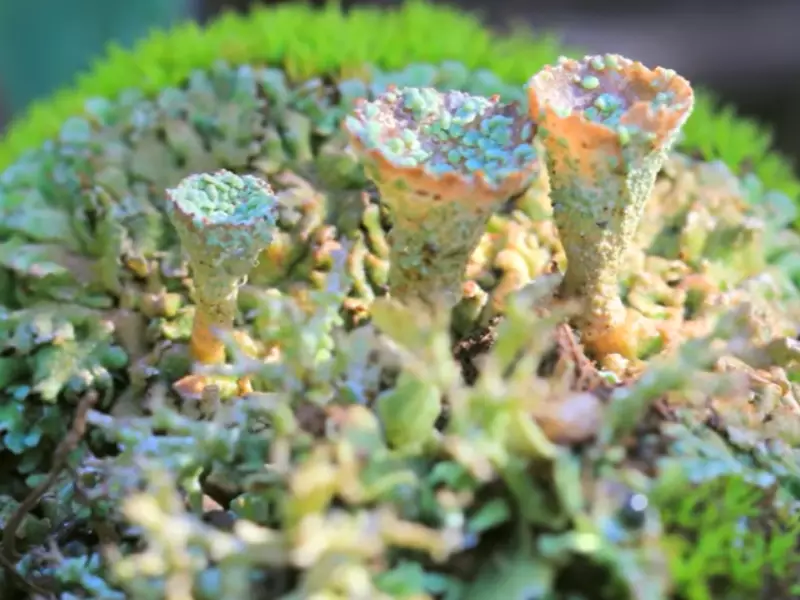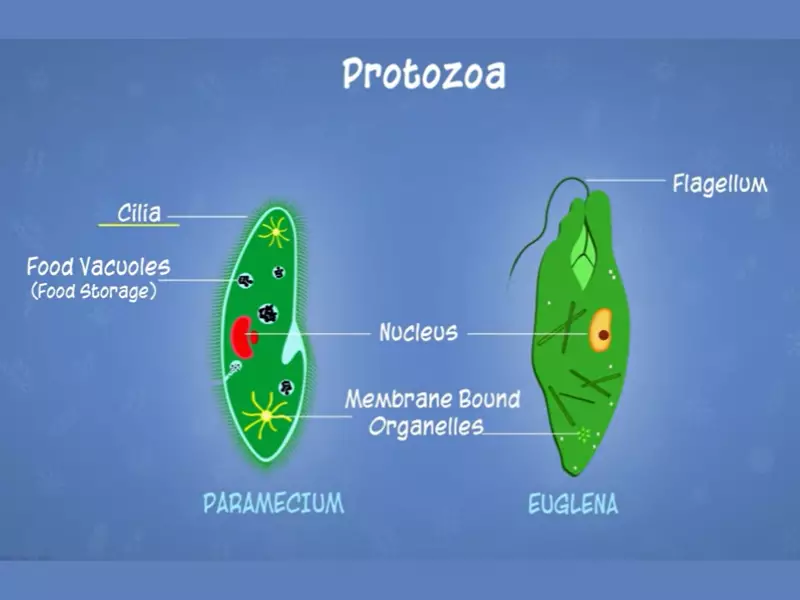Microorganisms are an essential part of Earth’s biodiversity, playing critical roles in various environmental processes and human health. Among these tiny yet impactful entities, fungi and protozoa stand out due to their unique characteristics, functions, and interactions with their surroundings. While often mentioned in the same breath due to their microscopic sizes, these organisms differ significantly in their biology and the roles they play in nature.
Fungi are complex organisms, closer to animals than to plants, that thrive by decomposing and absorbing organic material. Protozoa, on the other hand, are single-celled eukaryotes that hunt and gather other microorganisms for food. The primary difference between fungi and protozoa lies in their cellular structure, nutritional habits, and ecological roles. Fungi are typically multicellular (with the exception of yeasts), have a rigid cell wall made of chitin, and obtain nutrients through absorption. Conversely, protozoa are usually single-celled, lack a rigid cell wall, and often consume food by engulfing particles or other microorganisms.
Understanding the distinct nature of fungi and protozoa is crucial for grasping their impact on ecosystems, human health, and industries. Fungi play a pivotal role in nutrient cycling and are indispensable in medicine and food production. Protozoa, with their varied habitats and feeding behaviors, are essential for controlling bacterial populations and serving as a food source for larger organisms. Both groups, however, can also be pathogenic, causing a range of diseases in humans and other animals.

Fungi Basics
Definition and Characteristics
Fungi are a kingdom of eukaryotic organisms that are distinct from plants, animals, and bacteria. Their cells contain a nucleus with DNA wrapped around histones, similar to plants and animals. However, fungi have unique characteristics that set them apart:
- Cell Walls: Unlike plants, fungi have cell walls made of chitin, not cellulose.
- Nutrition: They are heterotrophs, meaning they cannot make their own food. Instead, fungi absorb nutrients from their environment, typically by breaking down organic matter.
- Growth: Fungi grow as hyphae – long, thread-like structures that form a network called a mycelium. This structure is crucial for their absorption-focused feeding.
Types and Examples
Fungi are categorized into several major groups, each with distinctive lifestyles and reproductive strategies:
- Ascomycota (sac fungi): Includes yeasts, molds, and morels. Known for their ability to form spores in sac-like structures.
- Basidiomycota (club fungi): Encompasses mushrooms, puffballs, and rusts. Characterized by their spore-producing structures, resembling clubs.
- Zygomycota: Features bread molds like Rhizopus. Recognized by their zygospore formation during sexual reproduction.
- Chytridiomycota: Aquatic fungi, some of which are responsible for diseases in amphibians.
Role in the Environment
Fungi play essential roles across ecosystems:
- Decomposers: They break down dead organic matter, recycling nutrients back into the soil, crucial for plant growth.
- Symbionts: Many form symbiotic relationships with plants (mycorrhizae), aiding in water and nutrient absorption, while receiving carbohydrates in return.
- Pathogens: Some fungi cause diseases in plants and animals, impacting agriculture and natural ecosystems.
Protozoa Basics
Definition and Characteristics
Protozoa are single-celled eukaryotes that exhibit animal-like behaviors, such as motility and predation. They are incredibly diverse, with characteristics that include:
- Mobility: Many protozoa move using flagella, cilia, or pseudopodia.
- Habitat: They are found in a wide range of moist environments, including soil, freshwater, and marine ecosystems.
- Feeding: Protozoa are predatory or parasitic, feeding on bacteria, other protozoans, or organic debris.
Types and Examples
Protozoa are classified into several groups based on their movement and life cycle characteristics:
- Amoeboids: Move using pseudopodia. Example: Amoeba.
- Flagellates: Propel themselves with flagella. Example: Giardia lamblia.
- Ciliates: Use cilia for movement and feeding. Example: Paramecium.
- Sporozoans: Non-motile and often parasitic. Example: Plasmodium, which causes malaria.
Role in Ecosystems
Protozoa contribute significantly to ecological balance:
- Food Web: Serve as a crucial link in aquatic and soil food webs, consuming bacteria and being eaten by larger organisms.
- Nutrient Cycling: Help in nutrient recycling by breaking down organic matter.
- Disease Regulation: Parasitic protozoa can control populations of certain species, though they can also cause diseases in humans and animals.
Key Differences
Cellular Structure
- Fungi have a complex multicellular structure (except yeasts, which are unicellular), with a rigid cell wall made of chitin.
- Protozoa are primarily unicellular with a flexible cell membrane and lack a cell wall, allowing for diverse shapes and mobility.
Nutrition and Metabolism
- Fungi absorb nutrients from their environment, decomposing organic matter.
- Protozoa ingest food particles, including bacteria, other protozoans, and organic detritus, through phagocytosis.
Reproduction Methods
- Fungi reproduce through both sexual and asexual means, often involving complex life cycles with spore production.
- Protozoa primarily reproduce asexually by binary fission, although some exhibit sexual reproduction processes to increase genetic diversity.
Habitat and Distribution
Fungi Habitats
Fungi are incredibly adaptable, colonizing a wide range of habitats:
- Soil and decaying material: Rich sources of organic matter for decomposers.
- Symbiotic relationships: With plants, algae, and animals in various environments.
- Extreme environments: Including deep sea vents and high radiation areas, showcasing their adaptability.
Protozoa Habitats
Protozoa thrive in:
- Moist environments: Freshwater, marine, and damp soil.
- Inside hosts: As parasites in animals and humans.
- Extreme conditions: Some species adapt to harsh environments, like high salinity or temperature.
Environmental Adaptability
Both fungi and protozoa demonstrate remarkable adaptability to environmental conditions. Fungi can enter dormant states, with spores that resist extreme conditions, allowing them to recolonize areas when conditions improve. Protozoa can form cysts, enabling them to survive unfavorable conditions and spread to new hosts or environments. This adaptability ensures their survival and proliferation across diverse habitats, making them integral components of their respective ecosystems.

Health Implications
Fungi in Human Health
Fungi, a kingdom of organisms distinct from plants, bacteria, and animals, play a dual role in human health. While the majority are harmless or beneficial, a subset can cause infections known as mycoses. These range from superficial conditions like athlete’s foot to invasive diseases that can impact internal organs.
- Beneficial aspects include their role in producing antibiotics like penicillin, essential vitamins, and their use in fermented foods which can aid digestion and overall health.
- Harmful impacts involve fungal pathogens like Candida, Aspergillus, and Cryptococcus species, which are responsible for conditions such as thrush, aspergillosis, and cryptococcal meningitis, particularly in immunocompromised individuals.
Protozoa and Diseases
Protozoa, single-celled eukaryotes, are known for their role in causing significant human diseases. These organisms are behind some of the world’s most deadly and widespread infections, including:
- Malaria, caused by Plasmodium species, transmitted by Anopheles mosquitoes.
- Amoebiasis, resulting from Entamoeba histolytica infections, leading to severe diarrhea and liver abscesses.
- Giardiasis, caused by Giardia intestinalis, known for causing gastrointestinal issues.
Treatment and Prevention
Effective treatment and prevention strategies are crucial for managing fungal and protozoal diseases. They include:
- Antifungal medications such as azoles and echinocandins for fungal infections, tailored to the specific pathogen and disease severity.
- Antiprotozoal drugs like artemisinin-based combination therapies for malaria and metronidazole for amoebiasis and giardiasis.
- Preventive measures encompassing mosquito control, access to clean water, proper sanitation, and hygiene practices to reduce exposure to pathogens.
Ecological Impact
Fungi in Ecosystem Balance
Fungi are pivotal in maintaining ecosystem balance through their roles as decomposers, symbionts, and pathogens. They break down dead organic matter, recycling nutrients back into the soil, supporting plant growth and overall ecosystem productivity. Fungi also form mycorrhizal associations with plants, enhancing water and nutrient uptake, and thereby influencing plant diversity and productivity.
Protozoa in Food Chains
Protozoa play a critical role in aquatic and soil food chains. They regulate bacterial populations through predation, maintaining microbial balance and contributing to nutrient cycling. As a food source for higher trophic levels, protozoa are integral to the diet of many insects, small fish, and other wildlife, supporting biodiversity.
Symbiotic Relationships
Symbiotic relationships are common in both fungi and protozoa, providing benefits to their hosts and the environment. Fungi engage in mutualistic interactions with plants (mycorrhiza), insects (like those with ants and termites), and algae (forming lichens). Some protozoa, such as those in the guts of termites, help in digesting cellulose, enabling these insects to utilize wood as a food source.
Industrial and Research Applications
Fungi in Biotechnology
Fungi’s versatile metabolic capabilities make them invaluable in biotechnology. They are used in:
- Antibiotic production: The discovery of penicillin from Penicillium fungi revolutionized medicine.
- Food industry: Yeasts, a type of fungi, are essential for baking, brewing, and cheese production.
- Bioremediation: Fungi can degrade toxic pollutants, offering an eco-friendly way to clean up environmental contaminants.
Protozoa in Scientific Studies
Protozoa serve as important models in scientific research, contributing to our understanding of fundamental biological processes. They are used to study:
- Disease mechanisms: Understanding how protozoan parasites invade host cells and evade immune responses.
- Drug testing: Screening for new drugs against protozoan diseases.
- Ecological and evolutionary studies: Their fast reproduction rates and genetic diversity make protozoa excellent subjects for studying ecosystem dynamics and evolutionary biology.
Future Potentials
The future potential of fungi and protozoa in industry and research is vast. Innovations may include:
- Advanced biofuels: Fungi are being explored for their ability to convert plant biomass into biofuels.
- Novel therapeutics: Research into protozoan metabolism and pathogenicity could lead to new treatments for diseases.
- Environmental sustainability: Utilizing fungi and protozoa for waste decomposition and water purification, promoting sustainable environmental practices.
FAQs
How do fungi and protozoa reproduce?
Fungi reproduce both sexually and asexually, depending on the species and environmental conditions. Asexual reproduction is common through spores, budding, or fragmentation. Sexual reproduction involves the fusion of two compatible nuclei followed by spore formation. Protozoa primarily reproduce asexually by binary fission but some species also engage in sexual reproduction, exchanging genetic material to create diversity.
What roles do fungi and protozoa play in the ecosystem?
Fungi are key decomposers in ecosystems, breaking down dead organic matter and recycling nutrients. They form symbiotic relationships with plants, enhancing nutrient absorption. Protozoa play a critical role in controlling bacterial populations, thus maintaining microbial balance. They also serve as a food source for higher trophic levels, integral to aquatic and soil food webs.
Can fungi and protozoa cause diseases in humans?
Yes, both fungi and protozoa can be pathogenic to humans. Fungi can cause infections like athlete’s foot, ringworm, and systemic diseases, particularly in immunocompromised individuals. Protozoa are responsible for diseases such as malaria, amoebiasis, and giardiasis. Proper hygiene, sanitation, and preventive measures are vital to protect against these infections.
Conclusion
The intricacies of fungi and protozoa reveal a fascinating world beyond what the naked eye can see, highlighting the complexity and diversity of life on a microscopic level. These organisms, despite their small size, have profound impacts on our world, from supporting ecosystems to influencing human health. Recognizing the differences between fungi and protozoa enriches our understanding of microbial life and its essential functions in maintaining the balance of nature.
The exploration of these microorganisms is not just an academic pursuit but a necessary step towards harnessing their potential and mitigating their threats. Whether it’s in developing new antibiotics from fungi or controlling disease vectors through the study of protozoa, the knowledge we gain today lays the groundwork for the innovations of tomorrow. Through continued research and appreciation of these microscopic beings, we can unlock solutions to some of the world’s most pressing challenges.
